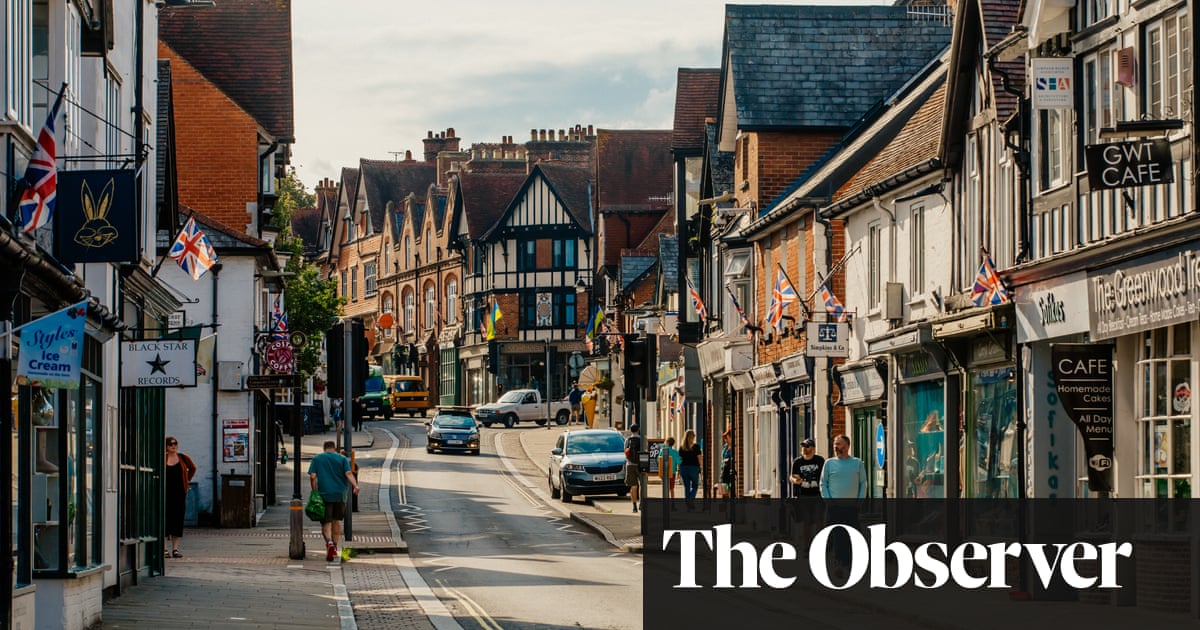
Within the genteel New Forest village of Lyndhurst, it was considered a crime of almost outrageous audacity.
On a busy Saturday afternoon in February, two vividly painted Moorcroft pottery charger plates were stolen in plain sight from the middle of the venerable antique store.
Yet it was the response from the owner of the Lyndhurst Antiques Centre that has, over time, become more notable.
Desperate for justice, Janine Stone didn’t turn to the police. Instead, the shopkeeper took matters into her own hands. A Facebook campaign demanding the pottery’s whereabouts – combined worth £750 – gained traction. Two days later, the plates were returned.
“The police only wanted to look into it after we had located them through our own efforts. We declined their help,” she said.
For many residents of Lyndhurst, which sits in the heart of the New Forest, it is just one example proving why Hampshire Constabulary is no longer considered relevant when dealing with so-called low level offences such as theft.
“A level of basic interest [from the police] would be nice,” said Stone.
Two months ago, it was revealed that Lyndhurst, along with the village of Minstead, several miles north, had the most unsolved burglaries in the entire UK, with 84 outstanding on the books. Not a single burglary had been solved there for three years.
Little wonder, then, that many in Lyndhurst believe that Hampshire Constabulary has abandoned them. In response, many residents and retailers have turned their back on the police. Instead of dialling 999 or 101, details of crimes, possible suspects and evidence are exchanged on village WhatsApp groups.
Aaron Page of Pages of Lyndhurst, which sells New Forest produce, admitted that shopkeepers had turned to vigilante-style networks to deter and catch criminals. “We very rarely bother the police – we don’t need them. We have developed our own little systems to replace them,” said Page.
Private social media groups routinely share alerts of suspicious people. A New Forest “crime watch” Facebook group has 16,000 members, almost half the population of the entire national park.
The reality is that Hampshire Constabulary, founded in 1839 and with a budget of £410.5m, finds itself supplanted in Lyndhurst by the crime-fighting grassroots efforts of the village, whose population is less than the 3,403 officers employed by the local police force.
But that will surprise no one who has monitored the trajectory of policing since 2010 when the Tories took power.
Analysts say that what began with enforced budget cuts and a 25% drop in funding led to fraught choices and a downgrading of responses to offences like burglary, meaning it is now highly abnormal for a crime to be solved.
Latest Home Office figures reveal that, nationally, 2.4m cases were dropped without a suspect being found last year. In the year to March, only 4.4% of all theft offences resulted in someone being charged. Collectively, just 5.7% of crimes were solved last year.
The government hopes it can turn the tide. On Monday, it launched “crime week” with home secretary Suella Braverman imploring police to investigate every theft and follow all reasonable leads to catch offenders.
Her intervention quickly backfired, provoking claims of political “interference” at a time when resources are vastly outstripped by a rise in recorded offences.
In Hampshire, the force has at least 300 fewer officers than in 2010 after saving £80m in “efficiency” since that year.
On Friday, the police and crime commissioner for Hampshire, Donna Jones, told the Observer she “fully supported” Braverman’s call for police to chase all leads. “All victims deserve to have their crimes investigated,” she added.
What this means for the resolution of crimes committed in Lyndhurst is not as straightforward as one might expect. According to police data, 118 burglaries were reported in “New Forest Heart” during the last year. Yet Hampshire police would not disclose how many had been solved, saying that an answer could only be acquired by lodging a freedom of information request that could take up to four weeks.
In June – the same month that Lyndhurst was revealed as having the most unsolved burglaries in the UK – police street-level data shows six thefts in the village.
One – classified as a “theft from a person” – appears to have taken place in the New Forest heritage centre. What has happened since? Has it been solved?
Carmel, on the centre’s cash desk, had no recollection of the incident. Neither had director Angus Harley. Another staff member – Mel – thought the crime may have happened outside and, cryptically, suggested it was “more serious”.
Hampshire police could not comment on the mystery theft, stating that they needed “specific times, dates and street names or addresses” to search its database.
Whatever its specifics, the likelihood is that it has not been solved. Home Office statistics reveal that only 0.9% of thefts from the person in the year to March 2023 resulted in someone being charged.
With such data in mind, Harley is grateful that the cost of living crisis has yet to spark a crimewave in his shop. Last year the heritage centre lost £410 of stock it couldn’t explain except for shoplifting, a figure largely unchanged from previous years.
“Maybe we are a little bit too trusting,” he grimaced, before conceding that he still retained some faith in the police. “I had a chat with a community support officer a while ago and he gave me his personal mobile number and told me that if I was ever in a pickle to call him, adding that he was only 10-12 miles away,” said Harley, citing it as proof that some officers could be relied upon.
It was a sentiment in short supply along the nearby high street. “When you called the police, nothing would ever get done,” said Page.
His shop has stood for 33 years in the village centre, and there was a time, he said, when his parents would have instinctively turned to the police for protection. Such a response is now laughable, said Page.
For the 15 years he has run the store, he estimates that at least 250 thefts from the premises have been committed without a single prosecution. When an offence takes place now, Page says he either apprehends the perpetrator if he catches them red-handed or posts a CCTV image of the suspect on social media.
Producing his phone, Page shows a hi-res picture of a man wearing a hi-vis vest and luminous cycle helmet, clutching a 33cl bottle of whisky.
“He took the whisky from my shop then ran into public toilets where he drank it in half an hour. Look at him! Bold as brass, he didn’t give a fig.”
The image was promptly circulated on the high street WhatsApp network, warning everyone to keep an eye out. The thief has not been seen since.
“When we started, we used to have walkie talkies but this is a far better system – we can instantly warn people and share a vehicle registration like we once might have done with the police. This way, we know people will act on it,” added Page.
If he could improve policing in Lyndhurst, what would he do? “Simple. We just want a presence. Officers walking around, chatting to people, old-school,” he said.
There is purportedly a police station in Lyndhurst but the internet describes it as “permanently closed”. When the force was asked how many officers were based there, staff asked for an FoI request.
“The only time you see police is when they use our car park and visit Costa [coffee],” said Page.
Donna Jones, the local police commissioner, accepts that despondency has set in. “Over the last few years, the public have felt there has been a decline in police visibility and officers responding to crimes.”
However, she said that recent changes to Hampshire’s policing model were designed to “bring police closer to communities”.
The New Forest district commander, chief inspector Nick Marsden, said the revised model would see the imminent rolling out of neighbourhood enforcement teams who could act quickly on intelligence.
Marsden added that over the past year he had seen a steady decline in crimes being committed – specifically theft offences – after the force vowed to visit every burglary and chase up investigative opportunities.
He added that local community initiatives such as ShopWatch schemes have been set up, and said that “police were beginning to see the results of this coming to fruition” in many places, including Lyndhurst.
“But we need the support of the public and for them to continue to report suspicious incidents or crimes to us. Only then can we take action and bring those responsible to justice,” he said.
Jones added: “The [new model] means a greater focus on local policing, moving CID back into local neighbourhoods as well as locally controlled response officers, neighbourhood officers and other specialist teams, thereby driving up police visibility.”
Back at Lyndhurst’s antique emporium, bustling with afternoon browsers, the return of the Moorcroft plates ultimately only underlined owner Janine Stone’s frustration with the police.
“All I want is for the police to show their human face. Is that a lot to ask?”












